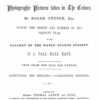
Peter H. Hoffenberg, “The Official Opening of ‘The Exhibition of the Photographic Pictures taken in The Crimea by Roger Fenton, Esq.'”
The first public exhibition of war photographs opened in London in late September 1855, during the costly and controversial Crimean War. The show introduced over 300 black and white images taken by well-known photographer Roger Fenton (1819-1869) and continued with various additions over the next several months in Britain. Later host cities included Manchester, Birmingham, and Belfast. Queen Victoria and Prince Albert were the leading sponsors of the shows. The first exhibition was well chronicled at the time, and this essay reviews some of those public contemporary responses, published primarily in major newspapers and periodicals, as well as in photographic society journals. Those responses are considered in light of the history of photography, mid-Victorian matters of art, science and war, and common conclusions at the time and that the show was primarily a work of propaganda to support the Crimean War and that Fenton’s images were not realistic.
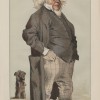
Peter H. Hoffenberg, “1871-1874: The South Kensington International Exhibitions”
The series of annual international exhibitions held during the early 1870s at South Kensington, London, were not particularly successful, or popular, but they were influential in the history of exhibitions. The alleged failures and the cancellation of the final annual exhibition halfway through the intended decade-long series of events provoked considerable discussion about the purpose, scale and expectations for exhibitions, which were no longer novel or limited to a particular city or nation-state. There were some successes, notably for the Australian colonies and British India, and for very specific trades and exhibitors, but the public discussion and those limited successes have generally failed to capture the attention of scholars. These events are rarely mentioned in books and articles about exhibitions and, when discussed, are considered to be failures without merit. This BRANCH contribution recognizes that other exhibitions were more popular and more successful, but also recognizes that the South Kensington shows were significant in addressing criticisms of exhibitions in general and in the generational history of both the shows and their organizers. The 1870s proved to be a pivotal period in the history of such exhibitions and the consideration of what merited public culture. The mantle was passed from Sir Henry Cole to his successors and the ambition of holding annual international exhibitions was replaced by more thematic shows in Britain and bold international shows in the Australian colonies. Amidst the general impressions of failure, there were also successes at the shows and those highlighted how inter-national exhibitions could prove useful in a changing world.
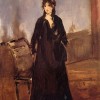
Elizabeth Berkowitz, “The 1910 ‘Manet and the Post – Impressionists’ Exhibition: Importance and Critical Issues”
“The 1910 ‘Manet and the Post-Impressionists’ Exhibition: Importance and Critical Issues” summarizes both the key historical aspects of the 1910 “Manet and the Post-Impressionists” exhibition, and the historiographic disputes that have arisen in relation to it. This article addresses the degree to which the term and art historical category “Post-Impressionism,” coined for this exhibition, represents a critical construction, rather than a genuine stylistic demarcation. In addition, this article counters the scholarly misperception that the vitriolic response to the 1910 exhibition was a product of British cultural ignorance of late-nineteenth- and early-twentieth-century continental Modern art.
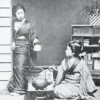
Wendy S. Williams, “‘Free-and-Easy,’ ‘Japaneasy’: British Perceptions and the 1885 Japanese Village”
This essay examines press reviews and accounts of the Japanese Village in London from newspapers and periodicals in 1885. These show that although writers were fairly confident that they “knew” the Japanese culture, they had only a superficial understanding of it, and they often depicted Japanese people as simple, coarse, and inferior. These writings largely reflect British feelings of superiority, enchantment, and confusion regarding Japan, a quickly progressing country that was not easy to classify.

Meaghan Clarke, “1894: The Year of the New Woman Art Critic”
In 1894, satirical journals such as Punch mockingly identified the phenomenon of the New Woman, as found in novels, plays and articles, as an intellectual and independent figure. These mannish representations of professional women seem impossible to reconcile with the aesthetic and fashionable realms of late Victorian art and culture. Studies have frequently considered the role of Victorian women as models or sitters—objects of a male artist’s inspiration. However, other career paths for women were possible. Many women were successful artists and an alternative entrée into the art world was journalism. This article will posit that women art journalists provided a living example of professional opportunities for intellectual New Women. Although their work has been largely left out of accounts of the period, they contributed to key developments in art history at the end of the century. To begin with, I will touch on the history of art writing and its development as a professional avenue for women. Then, I will explore specific themes in order to consider the diversity of their critical responses to contemporary British art circa 1894. This will encompass women’s writings on Pre-Raphaelite and academic artists as “celebrities,” groups influenced by French Impressionism in Newlyn and St. Ives, London Impressionists and Glasgow Boys, as well as art and culture beyond Britain.

Julie Codell, “On the Grosvenor Gallery, 1877-90”
The Grosvenor Gallery (1877-90), founded by Sir Coutts Lindsay and Lady Caroline Blanche Elizabeth Fitzroy (a Rothschild on her mother’s side) on 135-37 New Bond Street in London, generated a seismic change in the conventional Victorian art world in its exhibition of then avant-garde artists like Edward Burne-Jones, James McNeill Whistler and G. F Watts, and other leading members of the Aesthetic Movement, such as Frederic Leighton. Its unique methods of display, invitations to exhibit, support of women artists, and stunning building and interior decoration marked its ties to the Aesthetic Movement and its challenge to the Royal Academy.

Barbara Leckie, “Prince Albert’s Exhibition Model Dwellings”
This paper discusses Prince Albert’s Exhibition Model Dwellings built just off the grounds of the Great Exhibition in 1851. These model dwellings, designed by the architect Henry Roberts, contributed to growing efforts to place the mid-century crisis in housing of the poor at the forefront of public attention. They also made vivid the intersection of print culture and the built environment in three ways. First, they were a response to decades of print exposés of existing housing of the poor. Second, Roberts wrote a pamphlet, a how-to guide of sorts, on the Exhibition Model Dwellings as well as a book on model dwellings in general, The Dwellings of the Labouring Classes, that went into four editions. Finally, the Exhibition Model Dwellings were the topic of many contemporary print commentaries. These latter print commentaries will be the focus of this article. I want both to return the Exhibition Model Dwellings to the prominence they carried in the mid-Victorian period and to explore their contribution to the period’s conflicted response to the crisis in existing housing of the poor with respect to transparency, health, subject formation, and national identity.

Anne Clendinning, “On The British Empire Exhibition, 1924-25”
The British Empire Exhibition, held in 1924 and 1925, assembled the member nations of the empire to develop imperial trade connections and to cultivate closer political ties between Britain and her territories. A commercial, educational and imperial spectacle, the exhibition reminded Britons of the material and political value of the empire, as the nation struggled to recover from the economic impact of the Great War. For some colonial participants, however, the British Empire Exhibition enabled them to present a distinct national identity in pursuit of greater autonomy from Britain, while for others, it provided a forum in which to critique racial discrimination within the empire.
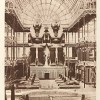
Anne Helmreich, “On the Opening of the Crystal Palace at Sydenham, 1854”
The Crystal Palace at Sydenham represents a number of key paradigms in Victorian culture: the emphasis upon visuality as a means of acquiring and conveying knowledge, the use of display as a vehicle of both education and entertainment, the desire to construct unifying historical narratives, and the emphasis upon rational recreation.
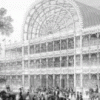
Audrey Jaffe, “On the Great Exhibition”
This entry considers the Great Exhibition in the context of Victorian England’s developing commodity culture and the forms of attention and distraction produced in relation to it. It discusses the stated purposes of the Exhibition, but is more interested in its experiential qualities: the way the movement of visitors was structured by the layout of hallways and rooms, the effect of the semi-transparent walls, and the sense of bewilderment that appears frequently in visitors’ accounts.
